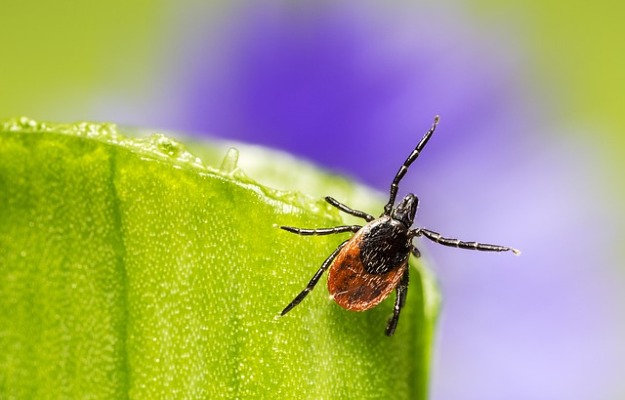Hookworms are intestinal parasites that can be fatal in pups. Less than 3mm in size, they may be difficult to see. The most common type of hookworm in dogs is Ancylostoma caninum. Other hookworms that can make our pets sick include Ancylostoma braziliense, and rarely, Uncinaria stenocephala.
Hookworms use their hooklike mouthpieces to latch on to the walls of the small intestines and feed on the dog’s blood, leading to anaemia, blood loss, loss of appetite and lethargy in dogs. In some cases, especially in pups, the infestation can even cause death.
Not all hookworms cause symptoms like weight loss and anaemia, however. Some lie in tissues and enter a state of dormancy and become enclosed in a cyst (known as being encysted).
Hookworms can be transmitted in multiple ways:
- Oral-faecal route: If your dog sniffs or eats the poo (coprophagia in dogs) of an infected animal.
- Accidental ingestion: These worms can get attached to dogs' skin and paws when they go out for a walk. If your dog ingests these worms while licking and grooming their skin or paws, that can also lead to a hookworm problem.
- Eating an infected animal: If your dog eats an animal carrying the worm (like a rodent).
- From mother to pups: Dog moms can give worms to their pups in utero (in the womb) or while breastfeeding them.
Hookworms are quite hardy and can survive in the open environment for some months, so it is always a good idea to safely dispose of your dog's poo.
Since hookworms reproduce quickly, they can be easily seen in a stool sample. Your vet will conduct a test known as faecal float to confirm a diagnosis of hookworm disease.
Deworming your dog is sufficient to take care of the infestation. However, the drugs may not pass through the gastrointestinal tract and will only act on the parasites present in the intestines. Therefore, you may need to repeat the treatment after two to four weeks to ensure that all the worms are taken care of once they migrate to the gut.
Management involves decontaminating your house by safely disposing of the faecal matter. If you have more than one dog, it would be a good idea to get the other dog dewormed as well. Hookworms spread quickly and preventive steps such as these work best.
It is possible to deworm a mother while she is pregnant to avoid gestational transmission. This, however, is an involved process and will need to be discussed in detail with the vet. If you live in an area that is known to have hookworms, this step may be necessary.
Some types of hookworms in dogs, like Ancylostoma braziliense, can also affect humans. They enter through the skin to cause a condition called cutaneous larva migrans. The best way to prevent this is to vigorously wash your hands and feet after playing with your dog, promptly dispose of any faeces from your vicinity and avoid walking barefoot in places where a dog may have pooped (this includes public parks and beaches).
Cutaneous larva migrans usually does not travel to the intestines in humans; in cases where it does, it causes diarrhoea. These are the signs of cutaneous larva migrans in humans:
- Red lesions on the skin: The larvae leave a twisty red trail as they move under the skin. They can move as much as two centimetres in a day.
- Swelling
- Itchiness
- Discomfort
- In rare cases, diarrhoea
Contact your doctor if you notice these symptoms, especially the red, twisty lesions. Usually, hookworms can't survive in the human body for more than five to six weeks.
- Symptoms of hookworm disease
- Hookworm disease causes
- Diagnosis of hookworm disease
- Treatment for hookworms in dogs
- Prevention of hookworm disease in dogs
Symptoms of hookworm disease
Symptoms can be especially severe in pups, and include:
- Anaemia: Hookworm infestations lead to a decrease in the number of red blood cells and cause anaemia in dogs. Hookworms release anticoagulants which make it difficult for the dog's blood to clot which leads to internal bleeding.
- Pale gums, mouth, ears and nostrils: This is a consequence of internal bleeding as well.
- Lethargy: The absorption of food is affected, which leads to lower levels of energy or lethargy in dogs.
- Loss of appetite and diarrhoea: Worm infestation affects the dog's gastrointestinal tract, and can lead to issues like loss of appetite or inappetence in dogs and diarrhoea in dogs.
- Dark stool: Internal bleeding causes stools to darken.
- Weight loss: This can happen if the nutrients are not absorbed adequately by the dog's intestines.
- Malnutrition and poor growth: A pup requires a large number of red blood cells to grow. Failing which, there may be an impairment in regular growth.
Hookworm disease causes
It is important to understand the lifecycle of a hookworm: the worms grow and reproduce in the small intestine of the host. Once the female releases the eggs, they pass out of the body with the poo. The same dog can ingest them again by accident, or another dog can come along and get infected as well. Since the worms can survive on the ground for a couple of months (provided it’s not freezing cold), they can be absorbed through the skin of another dog long afterwards as well.
For the worms to be able to infect the host, they need to have matured into third-stage larvae. If they enter the dog at this stage, they will either travel directly to the gut and begin to grow. Some of these larvae will travel to the trachea, from where they will either be vomited out or swallowed and moved to the gut. At this stage, these larvae along with the ones that made it directly to the gut begin to feed on the dog's blood.
Some larvae remain dormant for long periods of time and don’t cause any harm. However, if in the case of an infected pregnant female, the larvae are activated by birth hormones and can travel to the uterus and directly infect the pup. Otherwise, they can also pass from the mother to the pup during breastfeeding. Since pups are usually live together in close quarters, the spread of the infection is likely as well.
Pups are more prone to be infected by hookworms, but no specific breeds have been identified as being particularly vulnerable.
Diagnosis of hookworm disease
It is important to understand the life cycle of a hookworm. They grow and reproduce in the small intestine of the host. Once the female releases eggs, they pass out of the body in the form of stools. The same dog can ingest them again by accident, or another dog can come along and get infected as well. Since they can survive on the ground for a couple of months (provided it’s not freezing), they can be absorbed through the skin of another dog long afterwards as well. For them to be able to infect the host, they need to have matured into third stage larvae. If they enter the dog at this stage, they will either travel directly to the gut and begin to grow. Some others will travel to the trachea from where they will either be vomited out or swallowed and moved to the gut. At this stage, these along with those larvae that made it directly to the gut begin to feed on the blood of the organism.
Some larvae remain dormant for long periods of time and don’t cause any harm. However, if it is the case of an infected pregnant female, the larvae are activated by birth hormones and can travel to the uterus and directly infect the pup. Otherwise, they can also pass from the mother to the pup on breastfeeding. Since pups are usually together in close quarters, the spread of infection is especially likely as well.
Pups are more commonly infected by hookworms, but no specific breeds have been identified as being particularly vulnerable.
Treatment for hookworms in dogs
Deworming is the best available treatment for your dog. However, this may require many cycles to ensure that even the dormant hookworms are taken care of. The faecal float test may have to be repeated a few times to confirm that the worms are in fact gone. Hookworms are unfortunately stubborn and require strict monitoring.
In the case of pups, supplemental treatment may be required. In cases of severe anaemia, a blood transfusion could be life-saving. An intravenous drip may also be required to maintain electrolyte balance and provide nutritional help to the young dog.
Prevention of hookworm disease in dogs
Prevention is the best method to protect yourself and your dog from this type of worm infestation. It is on you to make sure that your dog is regularly dewormed. Maintaining high standards of hygiene is crucial: hookworms thrive in moist, crowded and dirty surroundings.
If your dog has been diagnosed with hookworm disease, do a thorough cleanse of your house. Vacuum carpeted surfaces and disinfect your dog’s bedding and coats. Remember, hookworms can live outside the dog's body for weeks and months; cleaning these surfaces will help to avoid recurrence of the disease in your dog.
Don't forget to give your adult dog deworming tablets, according to his or her weight, every three months.
References
- American Kennel Club. [Internet]. AKC Inc. New York.;Understanding Hookworms in Dogs
- VCA. [Internet]. VCA Inc.; Hookworm Infection in Dogs
- MSD Veterinary Manual [Internet]. Merck & Co., Inc.; Hookworms in Small Animals
- Pet MD. [Internet]. Pet MD, LLC; Hookworms in Dogs
- Veterinary Partner. [Internet]. Veterinary Information Network. Davis, California; Hookworms in Cats and Dogs














